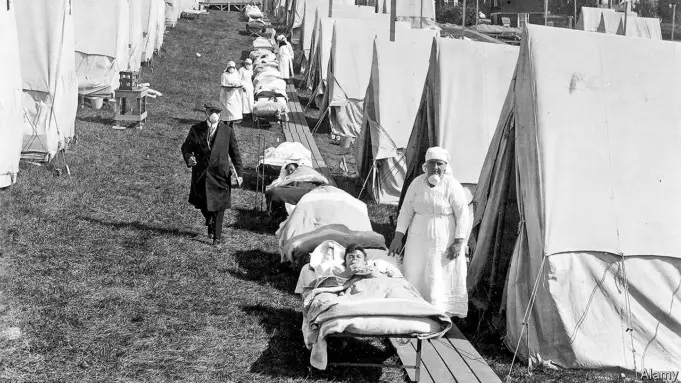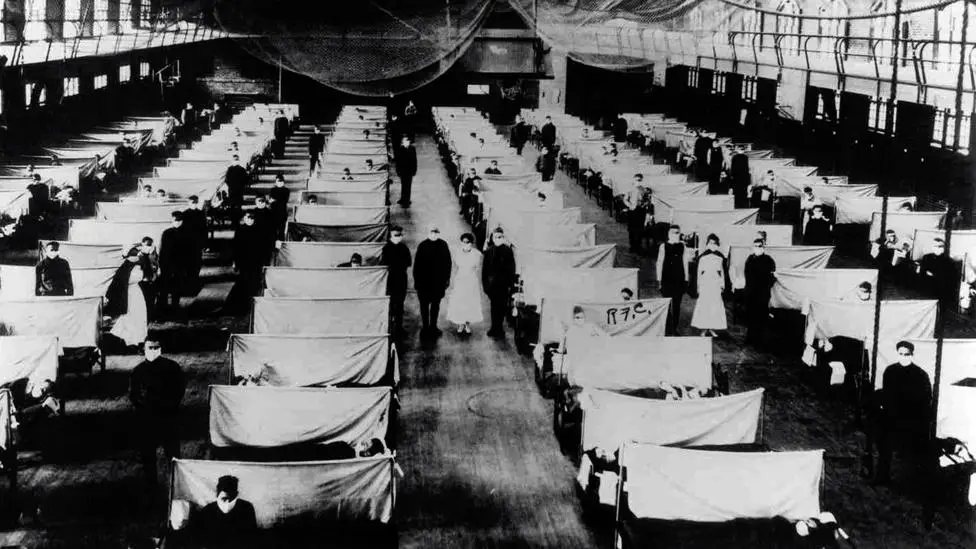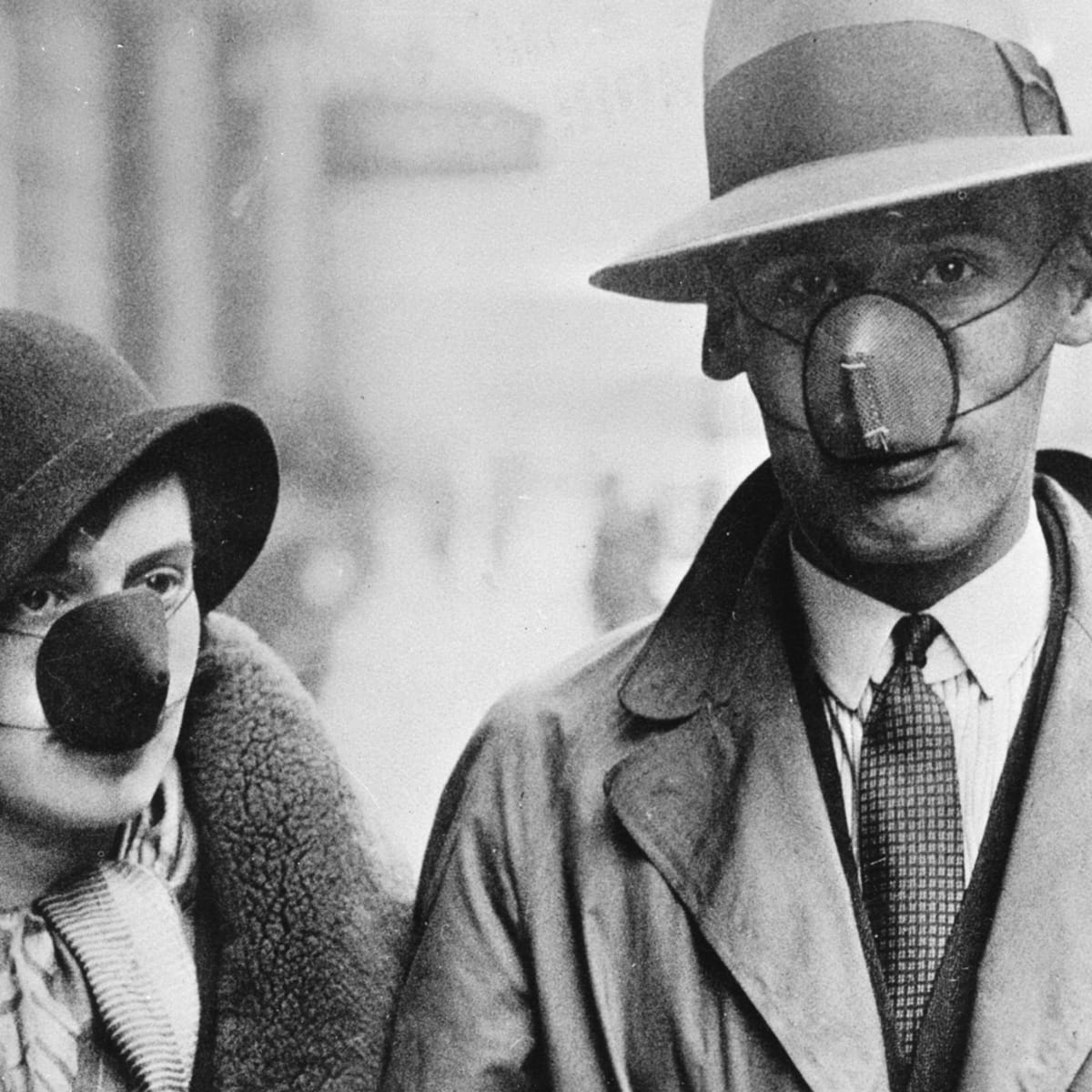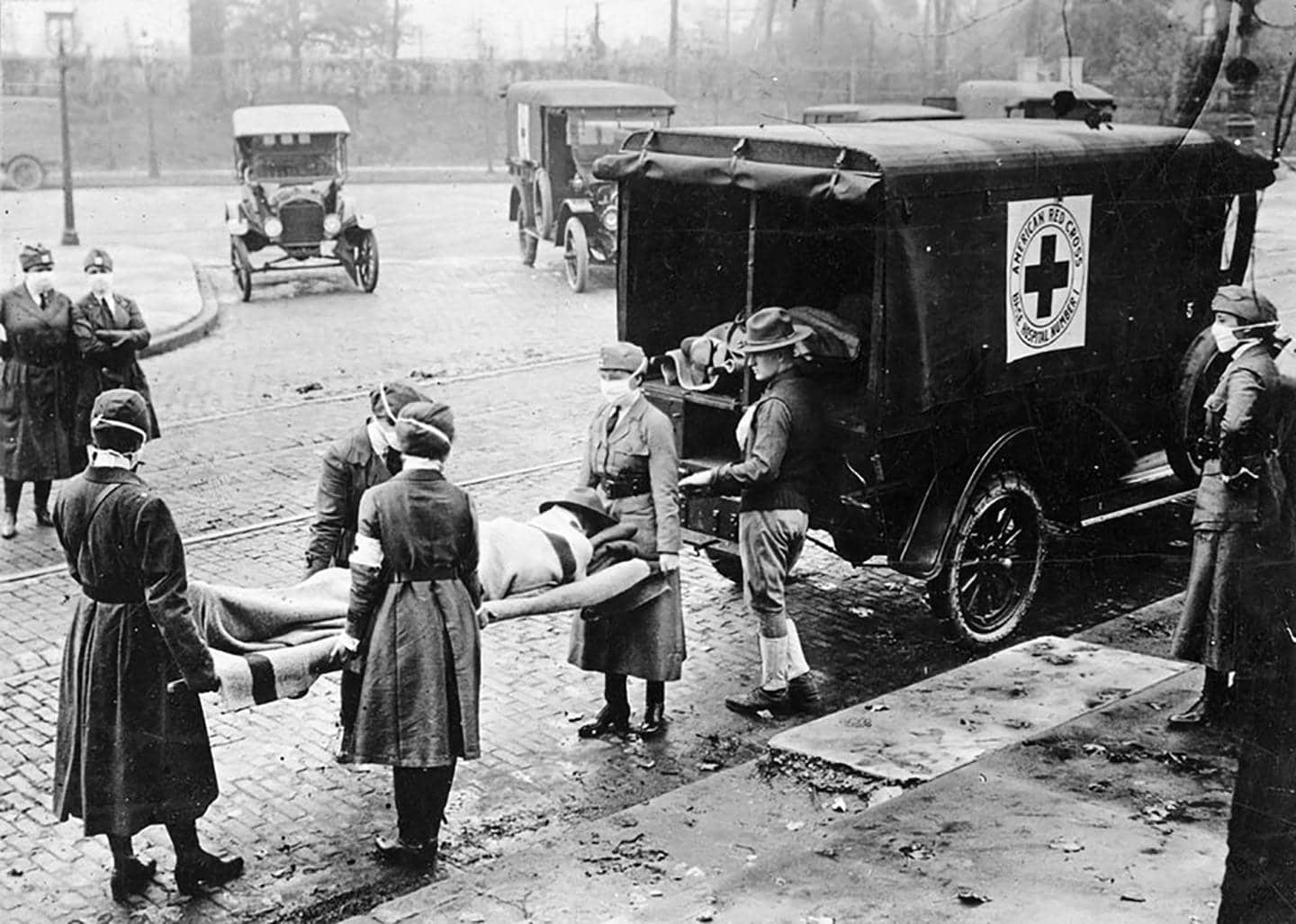In the year 1918, the world was inflicted with a deadly plague known as Spanish flu, the deadliest pandemic in history. This disease got estimated five hundred million people infected globally with the recorded number of deaths which estimate is twenty to five million in fifteen months.
This 1918 flu pandemic, popularly called the Spanish flu was a deadly strain of influenza caused by the H1N1 Influenza A virus. In the same year the pandemic broke out, it was discovered in Europe, then in the united states and some parts in Asia before going round the world is a speed of light.
At that time, there were no effective drugs or vaccines to treat this killer flu strain.
Nations had to take precautionary measures which had the options of; Enforcing lockdown by having schools, businesses, religious place of worship and other social places shut down, restrictions on the movements of citizens and if the citizens must go out then they had to wear face masks to control the spread.
It was an order issued to help control the spread of the infection which kept piling bodies up until the deadly virus ended.
What Is the Flu?
Flu also is known as Influenza, is a virus known to attack the respiratory system.
This virus is very infectious because when an infected person releases droplets of the virus into the air by coughing, sneezing, or talking, this can be inhaled by another person nearby, thereby getting the person infected and a potential spreader of the virus.
Again, the virus can live on objects for a few days until it is picked up by a person by touching the object with the virus on it and then touching their mouths, eyes or noses which pose as entry points for the virus to enter the body and get the individual infected.
Symptoms Of Spanish Flu
Two waves of this pandemic happened. The first one happened during springtime and was typically mild. The symptoms included just the usual flu symptoms such as fatigue, chills, and fever.
This wave of infection reportedly has low fatality rates and people who got infected we’re most likely to recover. But then, the second wave occurred during fall time the same year and was very infectious.
The fatality rate was reportedly high as infected persons died within hours or days of showing symptoms which includes; blue colouration of the skin and suffocation because their lungs get filled up with fluid.
The Cause of Spanish Flu
Experts are still uncertain about the exact place this particular strain of the virus originated from. But then, this particular Influenza was first discovered in Europe, America, and some areas in Asia before subsequently infecting the rest of the world in a couple of months.
Although the 1918 influenza was widespread and not particular to one area, it became globally known as the “Spanish flu”, because Spain suffered greatly by the infection coupled with the effects of World War I which helped worsened the blow of Spanish flu.
Fighting the Spanish Flu
When this infectious flu dealt the world, its blows, doctors, scientists, and healthcare providers were not certain about what caused it or how the right treatment to apply.
Unlike in our world today, in those days, effective vaccines, antivirals, and drugs were available to treat the flu.
What worsens matters was the fact that the first World War had left many areas in America with a shortage of physicians and other health professionals and high demand for them.
Even many medical workers available got infected by the flu themselves.
Hospitals in many areas were so full of infected patients that they were forced to convert schools, private homes, and other buildings into makeshift hospitals; many had to be staffed with medical students.
Lockdown, wearing masks in public places and physical distancing were imposed by Officials in order to control the spread of the virus.
Aspirin Poisoning and the Flu
Without any approved treatments for the Spanish flu, many healthcare providers felt that if they try to prescribe some medication that they would at least help relieve the symptoms. Aspirin, which had been brand marked by Bayer in 1899, was an option.
Medical healthcare professionals at the time advised infected patients to take up to 30 grams daily, a dose now considered to be unsafe and toxic.
This resulted in several cases of aspirin poisoning with complications such as; Pulmonary oedema, suffocation as a result of fluid accumulation in the lungs, or hyperventilation.
Currently, it is believed that many of the deaths recorded in October could be a result of aspirin poisoning.
The Flu Takes Heavy Toll on Society
Not only did this pandemic bring tears to the eyes of many by making a lot of people lose their loved ones. Children were made orphans, wives were made widows, husbands became widowers, and some families were wiped out entirely.
I918 was a year in history that shook the world we live in.
The economy did not escape the gruesome effects of the 1918 flu pandemic. Many businesses were forced to close down because several employees were infected and sick. Even common services like mail and newspaper delivery and waste collection were severely challenged because of sick employees.
In certain areas, there were not enough farmhand to help in harvesting crops.
Efforts Put In Place To Stop The 1918 Flu Pandemic
As the devastating second wave of the 1918 flu pandemic came along, it infected the dense popular of American cities from the returning soldiers.
Because there was no vaccine or proper treatment plan, it became the concern of local mayors and healthcare officials to come up with plans to help control the spread of the virus as well as keeping their citizens safe.
The pressure to appear loyal to their lands mounted on local mayors, healthcare providers, and other officials whose helps are needed at that wartime to map out plans to control this pandemic.
However, this pressure, coupled with the media under reporting the spread of the virus, pushed many of them to make decisions they initially thought were the best but eventually took tragic turns and backfired.
Philadelphia’s officials made late responses to the pandemic.
The director of Public Health and Charities for the city, Dr Wilmer Krusen, in the bid not to spread dread among the citizens repeatedly, insisted that the fatalities were not from the “Spanish flu,” but instead merely the normal flu.
So, the city without the slightest idea of how severe the virus was, gathered together at a Liberty Loan parade with the population of attendants reaching tens thousand, which help spread the virus-like wildfire.
In about ten days, more than a thousand citizens died among the infected 200,000 patients. Only then, did they make the right decision by closing down schools, saloons, and theatres.
But that was a late move because, by March 1919, more than fifteen thousand deaths were recorded.
The End Of The Spanish Flu Pandemic
Spanish flu came to an end in 1919. This is believed that is was as a result of the infected ones dying off or developing immunity.
In 2008, studies carried out discovered that a group of three genetic factors enable the virus to weaken the host’s bronchial tubes and lungs and bacterial pneumonia which contributes to why the 1918 flu was so deadly.
We hope that this article has been helpful? Kindly leave a comment below.















